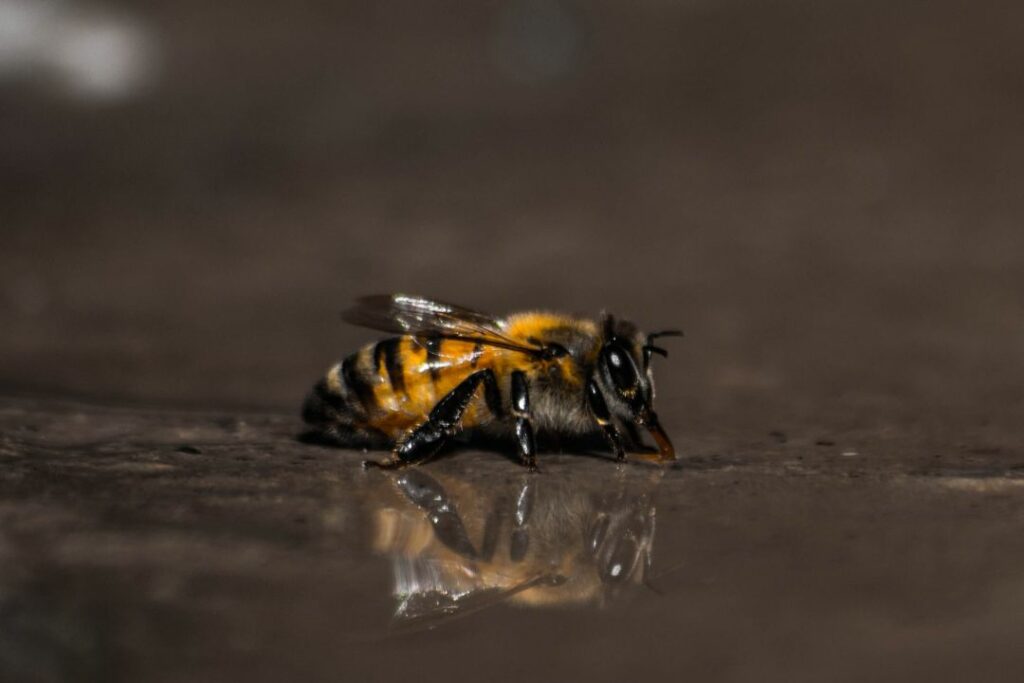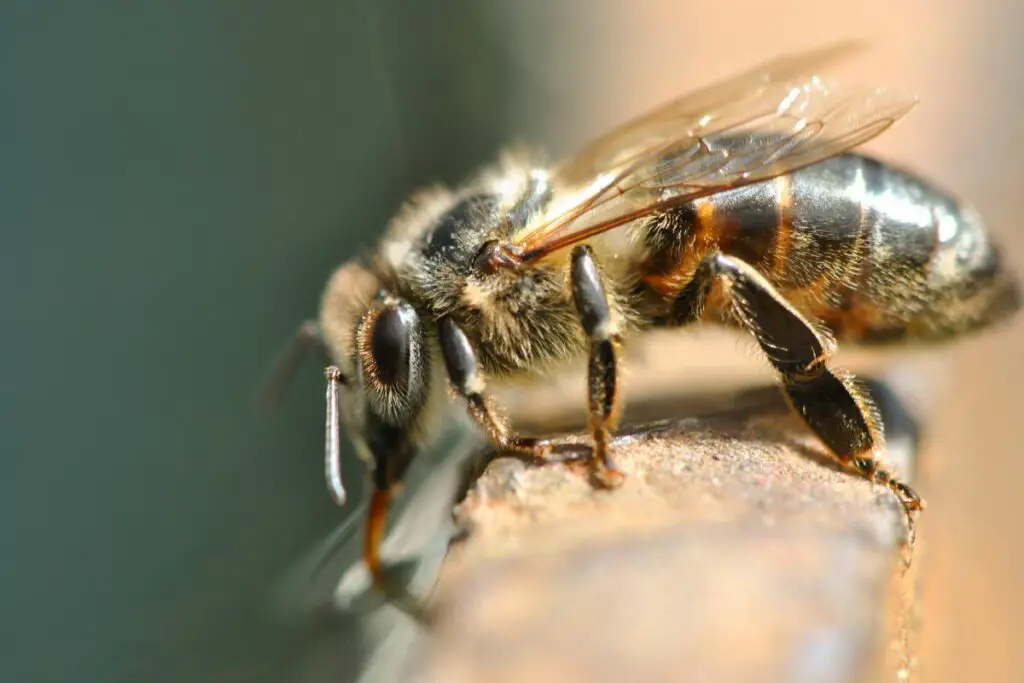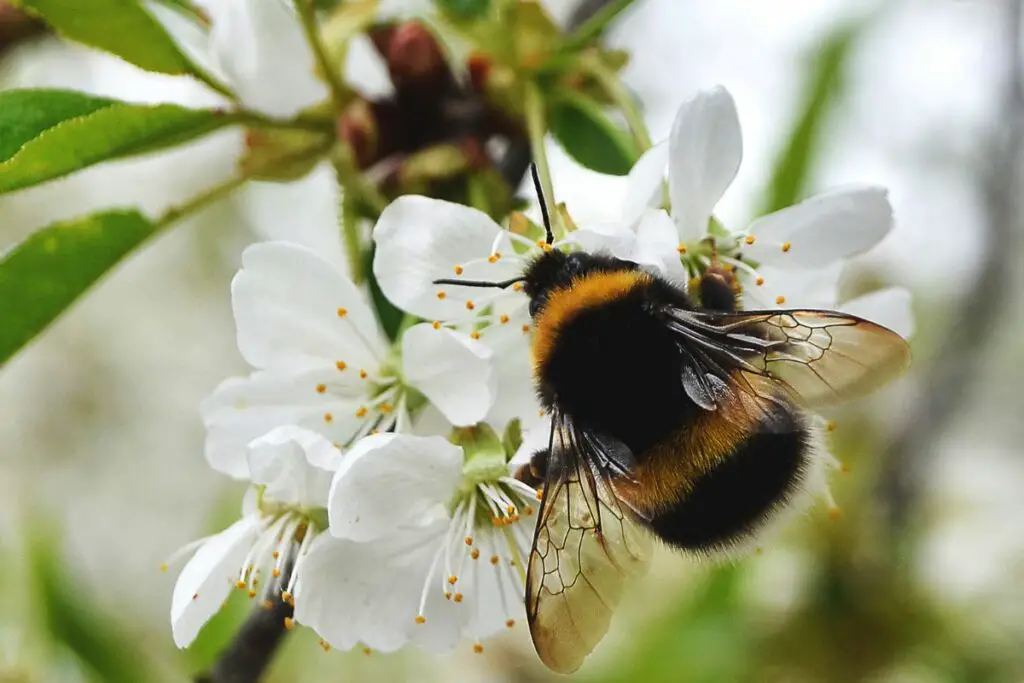Last updated on January 5th, 2024 at 11:44 am
A dying bee may have tattered wings and can be seen writhing on the ground. A tired bee, on the other hand, may appear slower and more lethargic but will still have intact wings and respond to external stimuli.
*Important tip – If you’re not sure if your bee is sleeping or dead the best course of action is to simply let it be.
But there are some key signs you can look out for to help you diagnose the issue and in some cases, steps you can take to help.
How To Know If A Bee Is Dying
Let’s take a look at some of the signs and symptoms that your bee is just coming to the end of its natural life.
Unresponsiveness to stimuli
When a bee is dying, it may become unresponsive to stimuli like touch or movement. This can present as appearing dazed or confused.
This can be the result of various factors like pesticides, disease, or old age.
Tattered or torn wings
A bee with tattered or torn wings is unlikely to survive for any extended period of time. The wings are crucial for a bee’s survival because they let the bee fly and forage for food.
When a bee’s wings are damaged loses it’s ability to fly and more importantly, escape predators.
There are lots of possible reasons why a bee’s wings start to wear and tear like injury, exposure to harsh environmental conditions or DWV (deformed wing virus) which you can find out more about in our short read on bees with no wings.
A bee walking in circles
If you’re lethargic bee is moving in circles it could have been parasitised.
The North American parasitoid phorid fly has another more famous name ‘the zombie fly’.
It lays its eggs in the abdomens of honey bees, bumble bees and paper wasps.
Infected bees will walk in circles as the growing larvae inside them start to put pressure on their internal organs and nervous system.
*Interesting fact – Other bees in the colony can sense when a dying bee has been parasitised and will eject it from the nest or hive.
Difficulty moving or walking
A dying bee will normally have difficulty moving or walking. They can look weak and uncoordinated and will struggle to lift off the ground and take flight.
This could be due to disease, injury, or exposure to toxins but it’s worth noting that having been exposed to neonicotinoid pesticides, bees can experience impaired mobility and coordination.
*Important tip – Bees poisoned by pesticides will often have their tongue sticking out when they expire.
Lack of grooming
Bees are fastidious little creatures that spend a lot of time grooming themselves and their nestmates.
A dying bee that’s close to death may stop grooming itself leading to a dishevelled appearance.
This is a common occurrence in nests and hives that are infected with varroa mites.
Abnormal behaviour like excessive crawling on the ground or flying in circles
Dying bees will often partake in abnormal behaviours like excessive crawling on the ground or flying in circles.
Much like tattered or crippled wings, this is a common symptom amongst bees suffering from DWV.
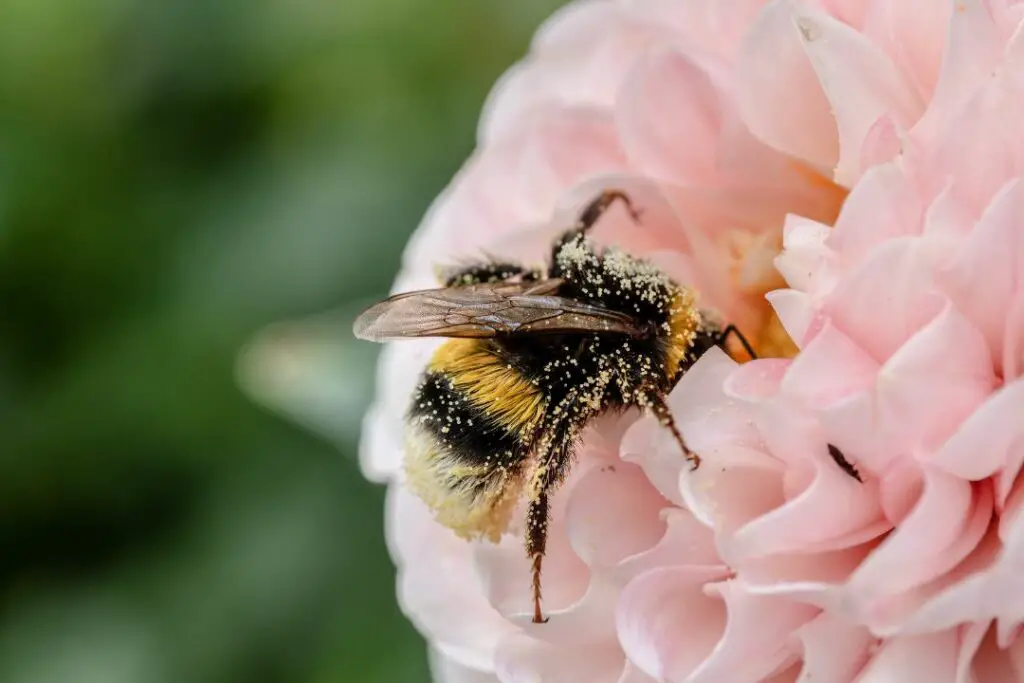
Signs That A Bee Is Tired
Now we’ve covered all of the things you can look out for to tell if a bee is close to the end of its life let’s look at the positive signs your bee’s just puffed out.
Slower movements
A tired bee will be much slower than usual. It can take longer to fly from flower to flower and will move much more slowly on the ground.
This symptom is a natural part of a bee’s daily energy cycle and is not cause for alarm.
Resting more frequently
Tired bees rest more frequently than usual. During this period they take breaks on flower petals or on the ground to conserve energy.
This is just a natural part of a bee’s daily energy cycle and isn’t anything you need to be worried about.
Grooming itself
A tired bee will often take breaks to groom itself and maintain its hygiene.
These small stops help the bee rest and regain its energy after a busy day of gathering nectar and pollen for the colony.
Responding to stimuli
A tired bee will respond to stimuli like touch or movement. This means it will still move away or fly off if it feels threatened.
This symptom indicates that the bee is still alert and aware of its surroundings.
Intact wings
Healthy wings mean the bee can take flight so it’s another tick for the tired rather than dying category.
Carrying pollen or nectar
A bee that is carrying pollen or nectar is likely a forager that’s been out collecting food for the hive.
This indicates that the bee is still capable of working and is not in immediate need of help. The best course of action is to let the bee continue its work and conserve its energy.
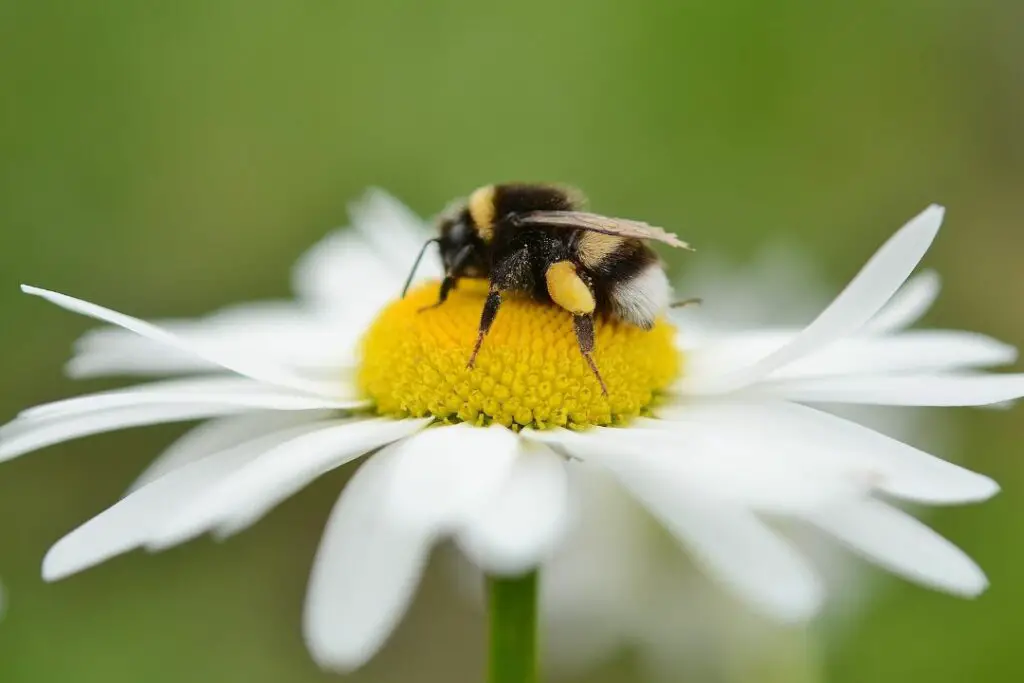
How You Can Help A Tired Bee
If you’re dealing with a tired bee then you’ve got a few things you can do to help.
Place it on a flower
If your exhausted friend is in an unsafe location like a footpath or a road then your first port of call is to remove them from danger.
Using a leaf or something similar you need to gently lift your bee up and onto the leaf while being incredibly careful not to damage its delicate legs and wings.
Try not to move them too far so they can still get back to the colony and aim to place them on or around flowers, bonus points if they’re rich in nectar.
Create a sugar water solution
If you find your bee in an urban environment where flowers are scarce then you can create a sugar water solution to help give it the energy it needs to return home.
Head over to our page on how to revive a bee to find out exactly how to make your sugar-water solution and safely feed it to your bee.
Use your bee revival kit
Found a tired bee when you’re out on the go?
Our bee revival kit is the perfect way to help thirsty bees when you’re out and about on your travels.
It’s a handy keyring that contains a special liquid that is just like the nectar bees consume every day.
It’s a safe healthy way to give your bee the boost it needs to get back to the hive and you can carry it with you wherever you go.
You can grab one here with next-day delivery so you’ll be saving bees in no time.
- 🐝🐝🐝 Wildlife Gifts To Help Bees & Pollinators – Your Bee Revival Keyring contains a special…
- 🎁🎁🎁 Bee Gifts For Women – Give the gift of giving with our bee accessories from Revive a…
- 🌱🌱🌱 Plantable Seed Paper Packaging/Seed Gifts – What makes the perfect eco gift? We think…
- 🌍🌎🌏 Planet Friendly Gadget Keyring – A great gift for a friend or loved one who cares about…
- 🐾🐾🐾 Supports Rewilding Britain – A percentage of every sale will be donated to Rewilding…
